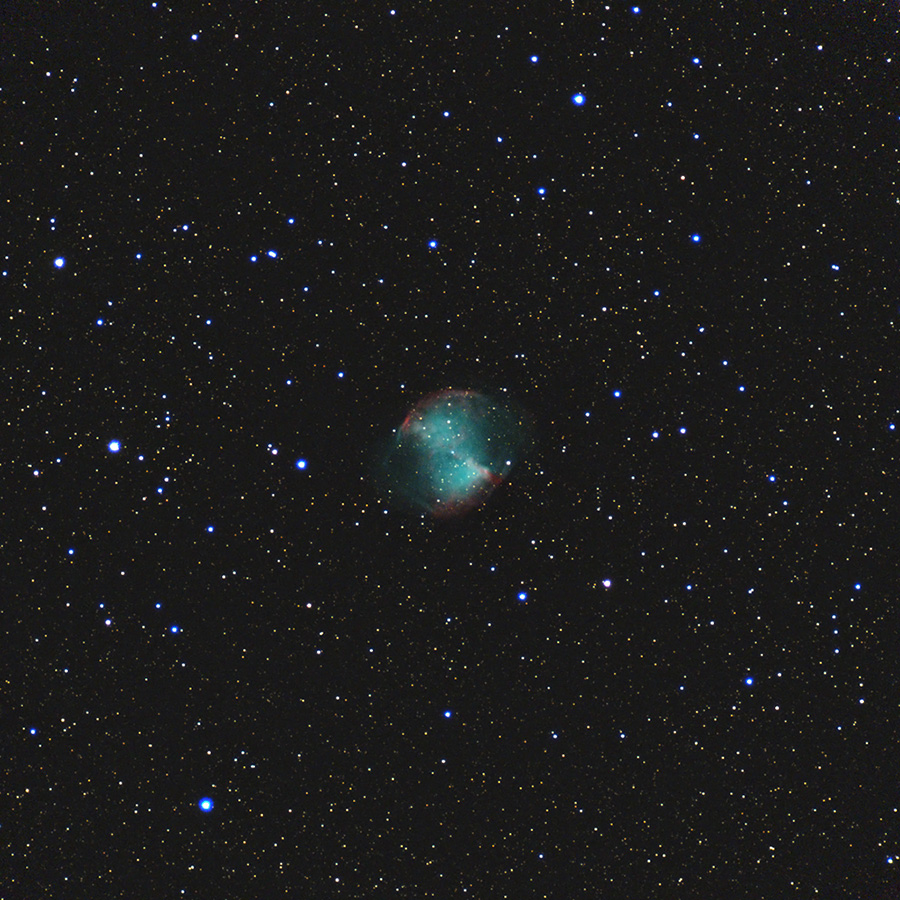
Telescope: Unitron 510 5” f/16 refractor, Atlas EQ-G
Camera: Canon EOS Ra full frame DSLR
Filter: 2” ZWO IR Cut Filter
Guide scope: Williams Optics 50mm Guidescope, ASI290MM, PHD
Exposure: 11x120sec, ISO 1600, saved as RAW
Darks: Internal (Long Exposure Noise Reduction)
Flats: 32×1/10s sky flats taken at dusk
Average Light Pollution: Bortle 8, fair transparency, haze, smoke
Lensed Sky Quality Meter: 18.7 mag/arc-sec^2
Stacking: Mean with a 1-sigma clip
White Balance: Nebulosity Automatic
Software: Backyard EOS, Deepsky Stacker, Nebulosity, Photoshop
M27, the Dumbbell nebula, is an expanding shell of gas that was ejected from a sun-like star as it exhausted its hydrogen fuel. Swollen into a red giant, the star shed its outer shell while its core collapsed into a white dwarf. Fierce UV radiation from the collapsed core sets the surrounds gas aglow with the blue/green light of doubly ionized oxygen. The diameter of the nebula is about 1 light-year with an estimated age of 9,800 years. Located between Sagitta and Cygnus, M27 is fairly easy to find with a small telescope. Visually, it shows two lobes connected by a neck of nebulosity, giving the nebula its characteristic dumbbell shape.
This is the third of 5 test images taken with my Unitron 510. M27 is currently high in the east as the sky darkens. (Photo credit; John Graham, 7/14/2023)
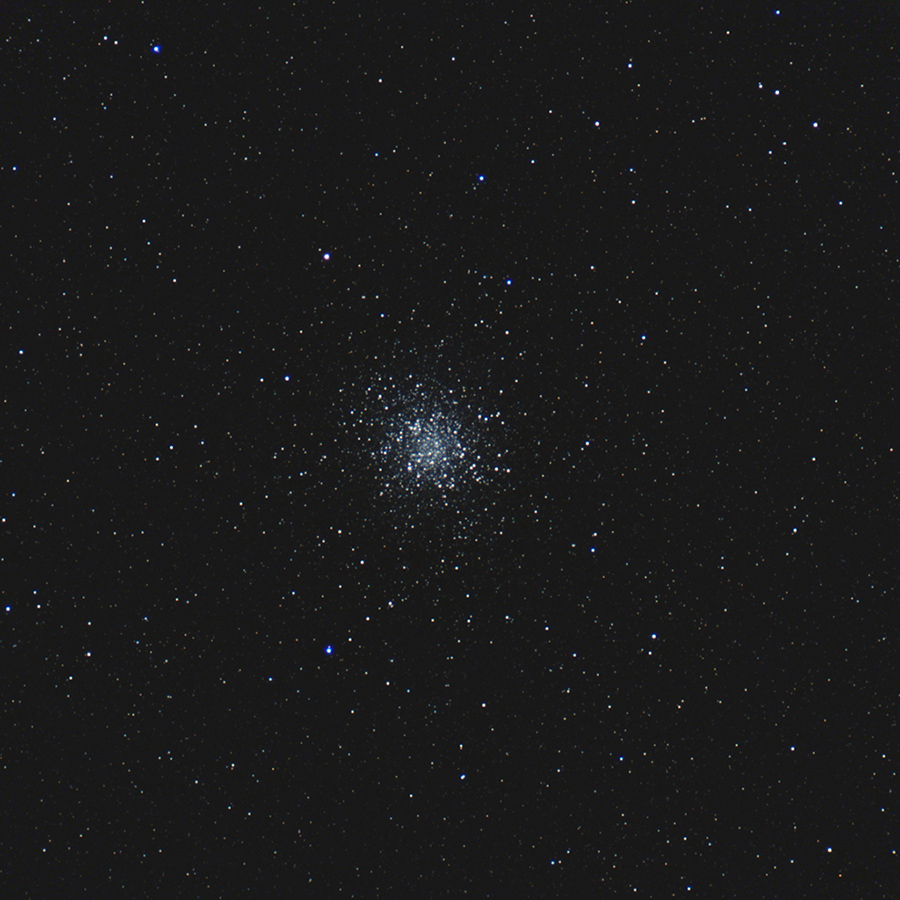
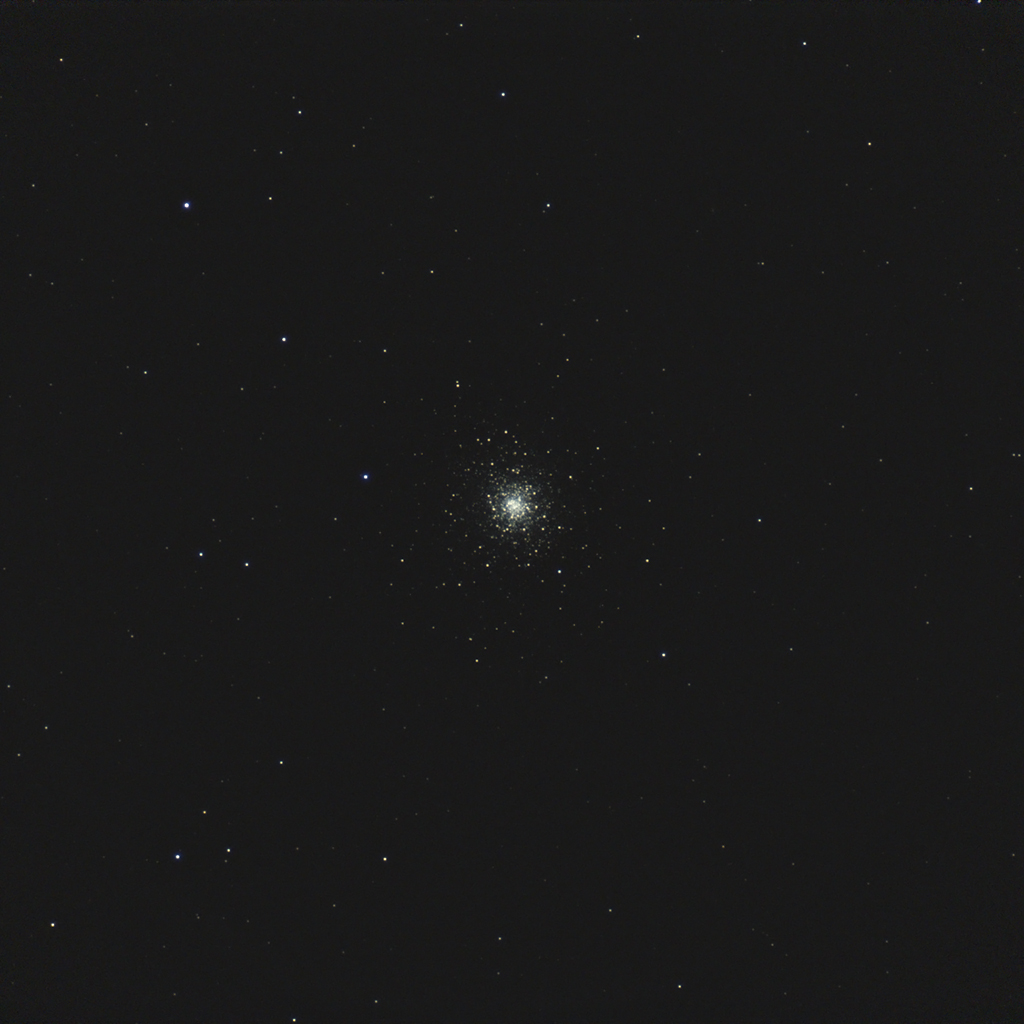
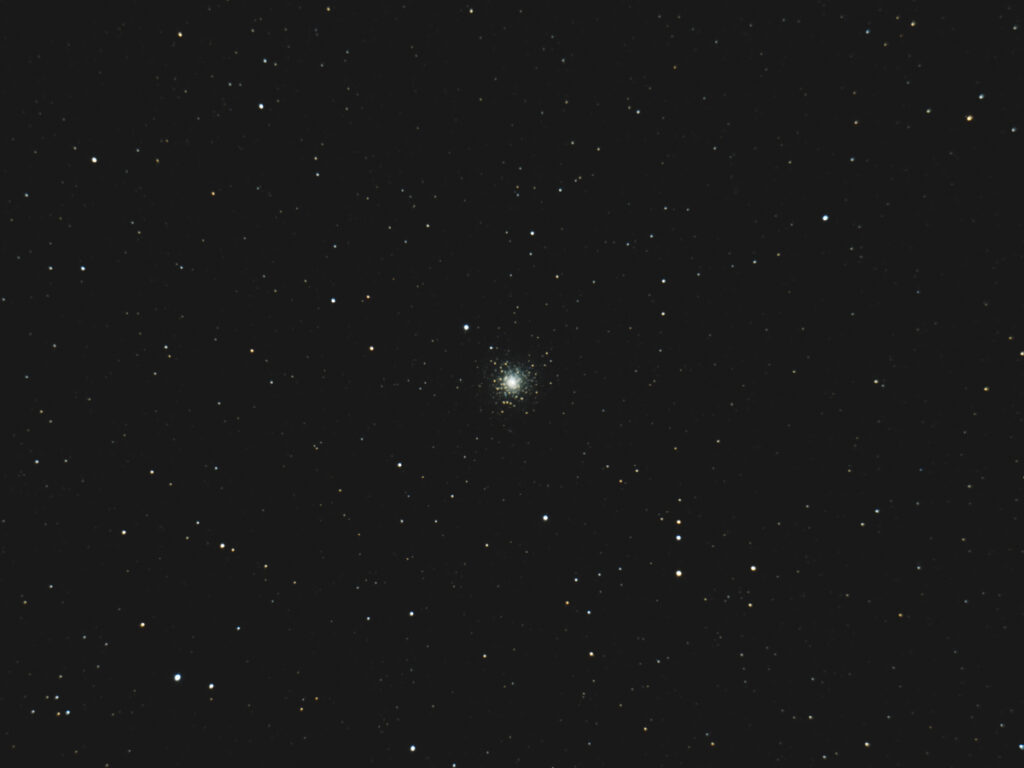
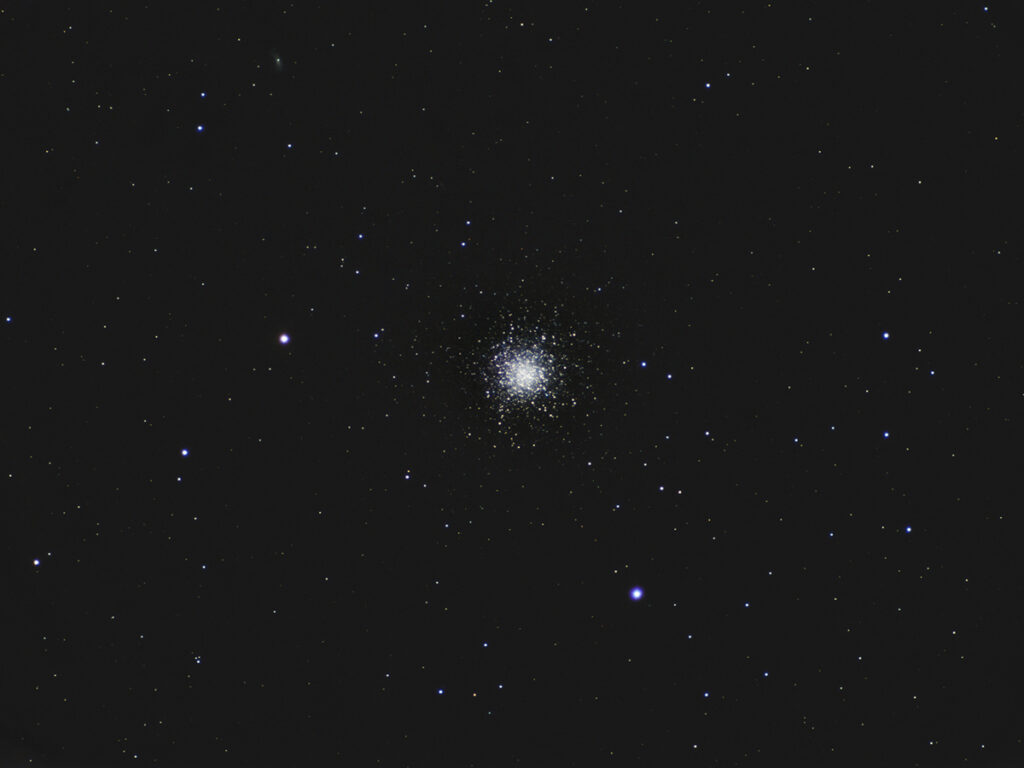
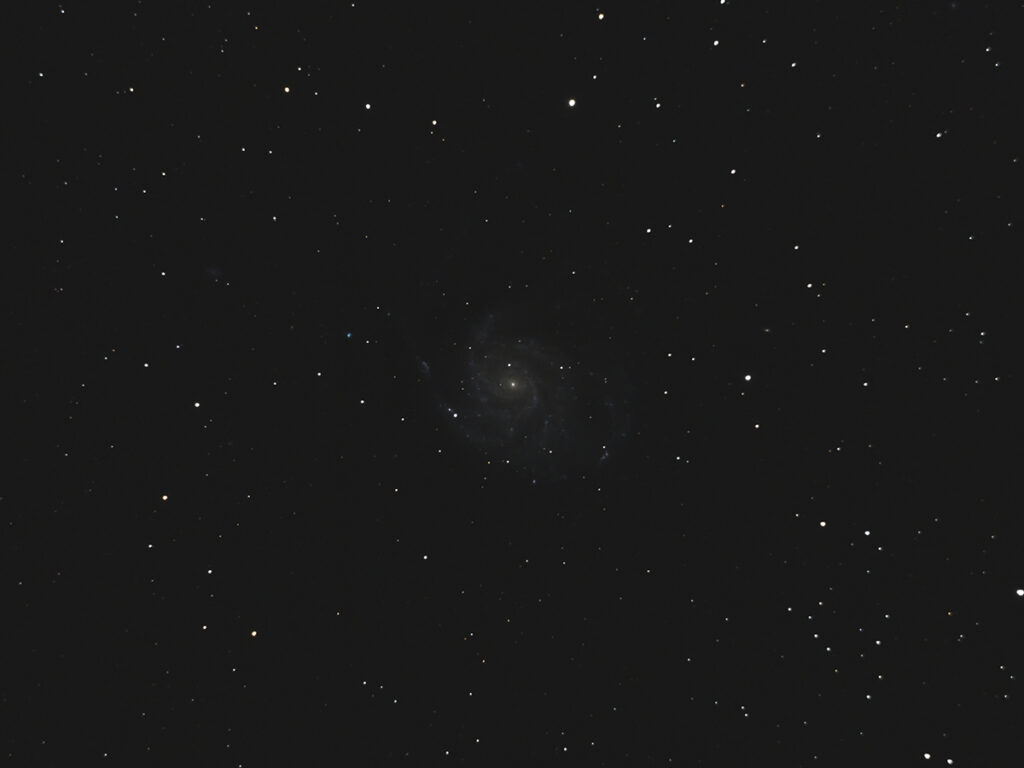
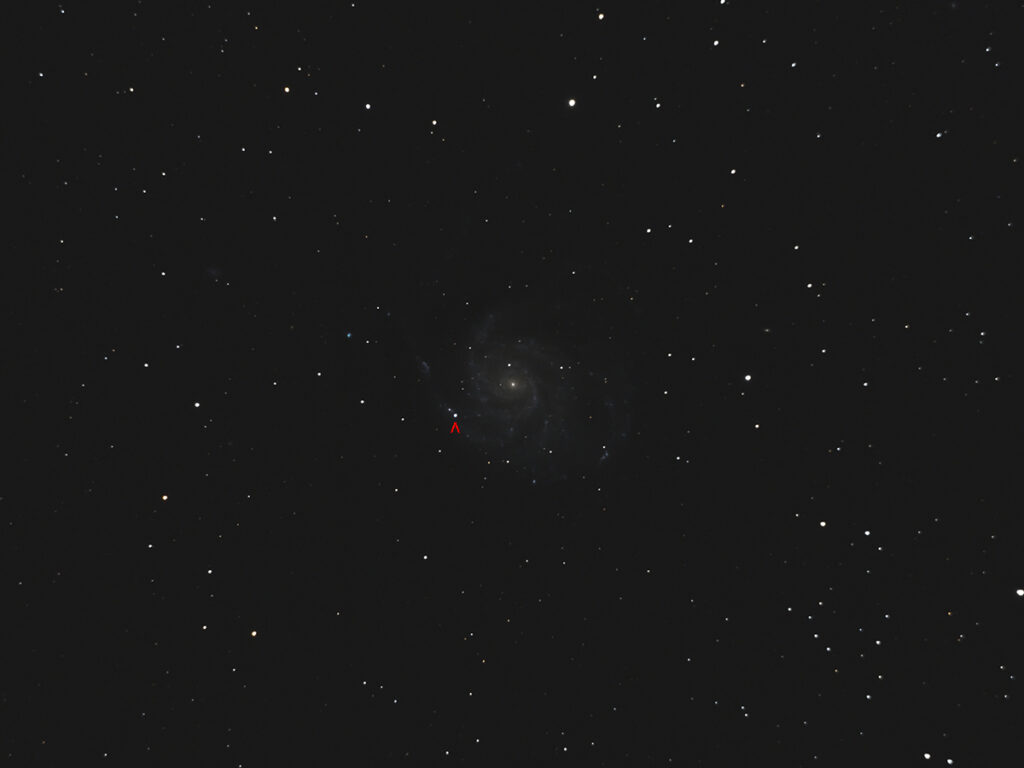
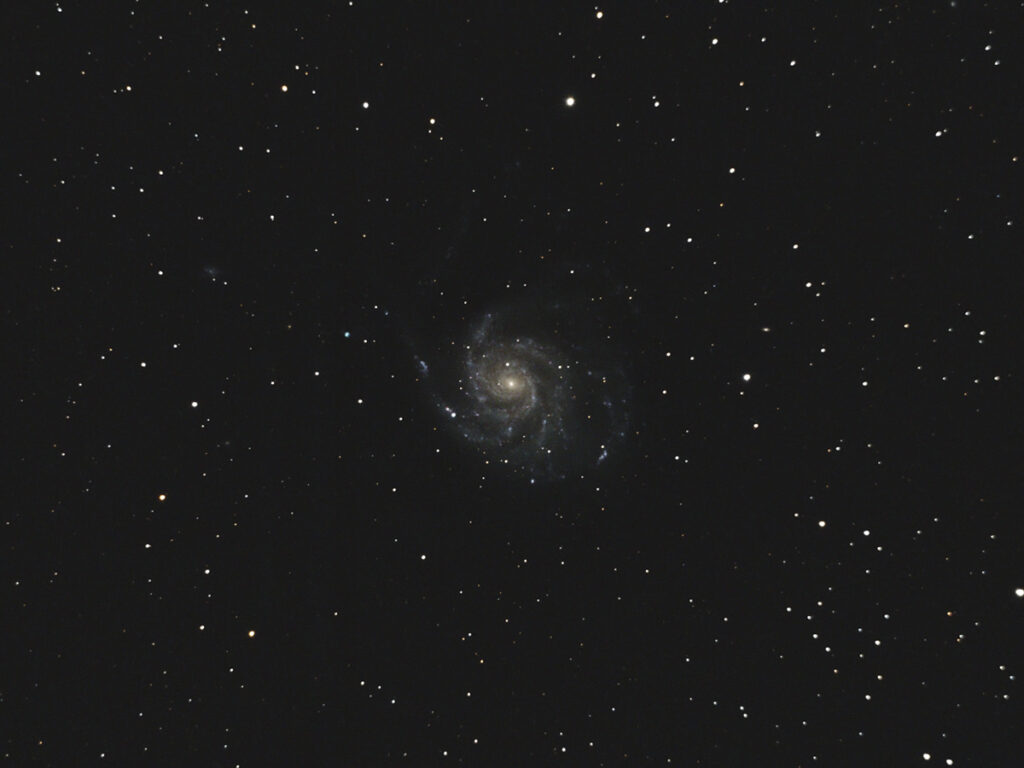
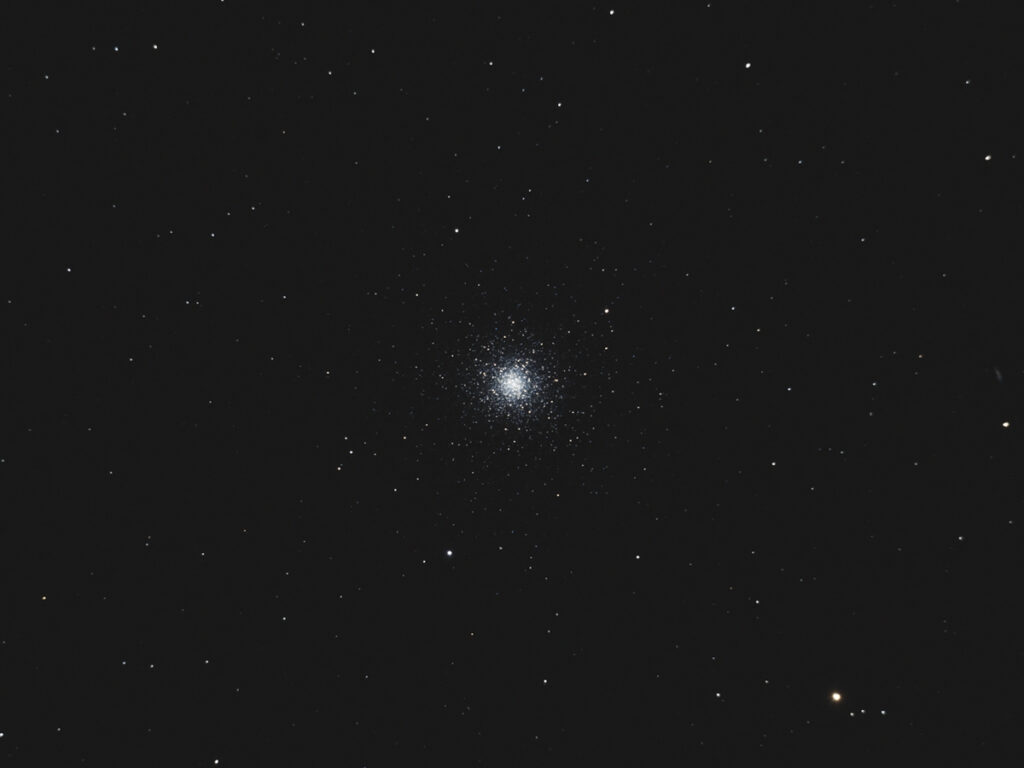
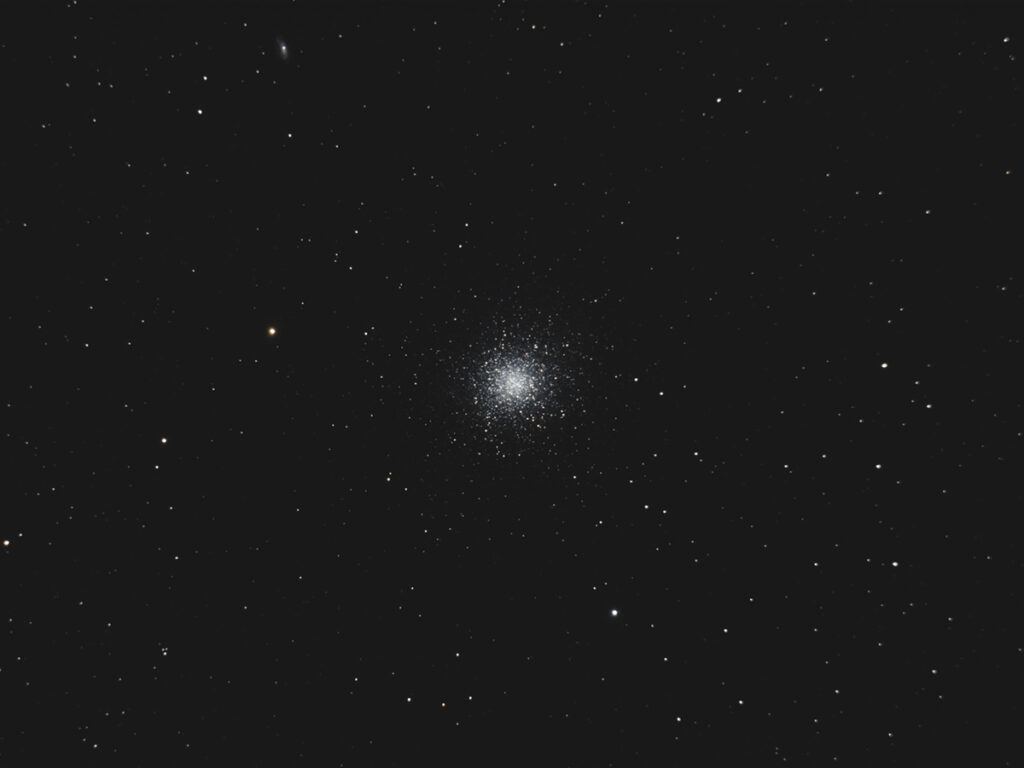
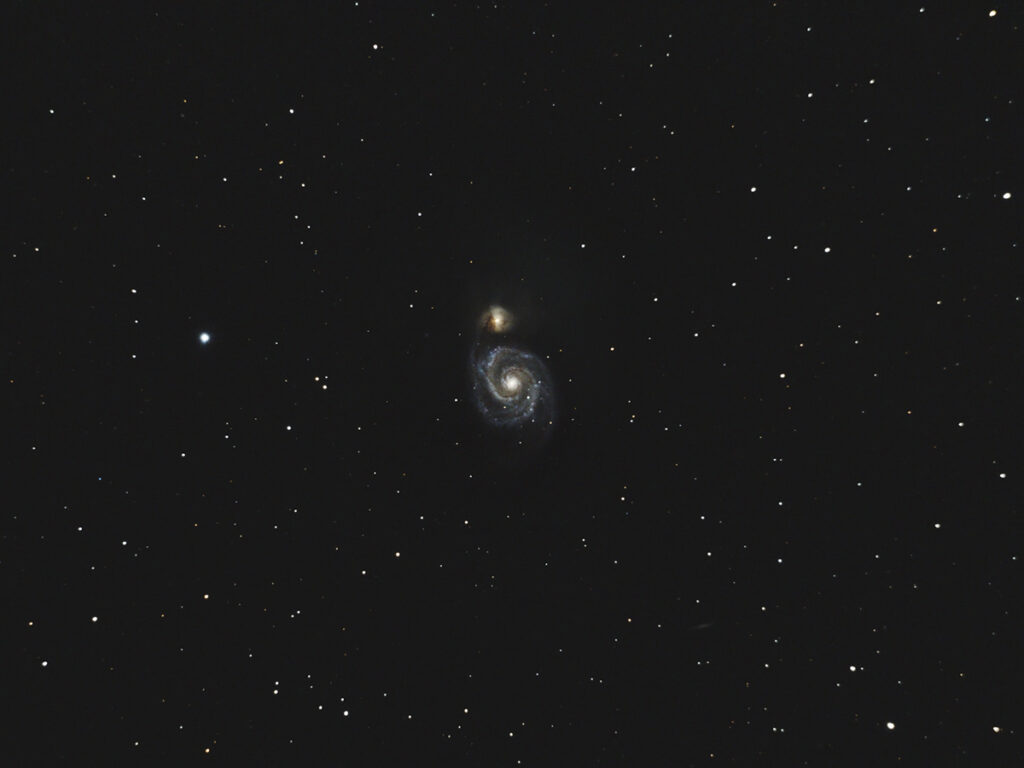
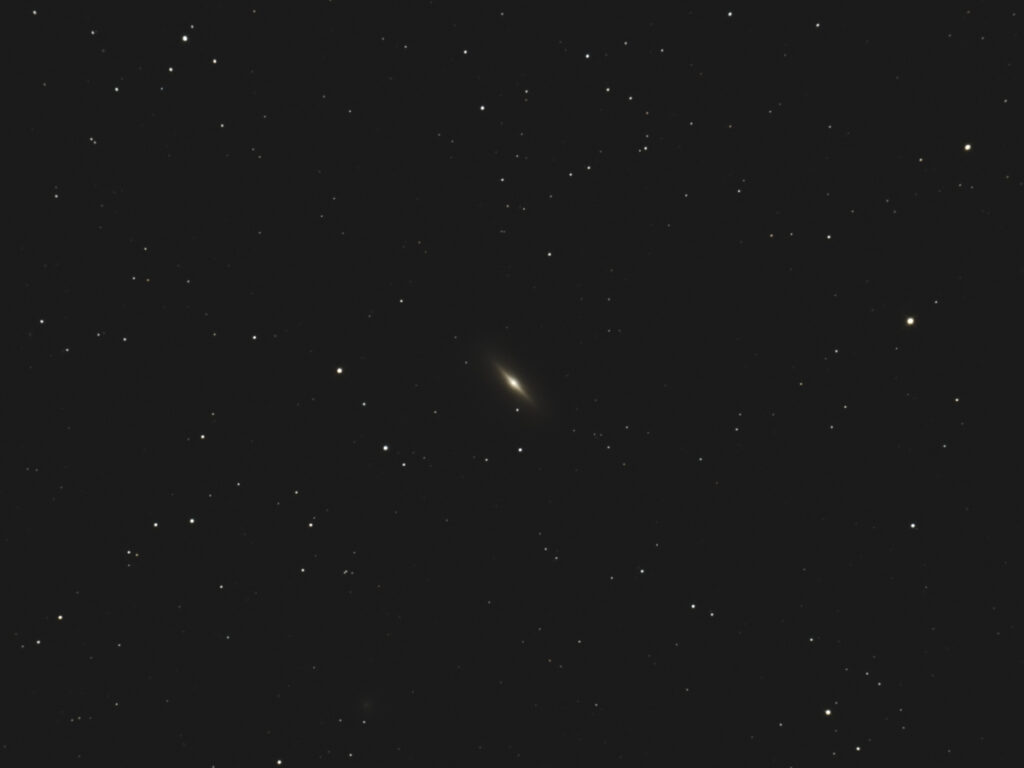
Recent Comments